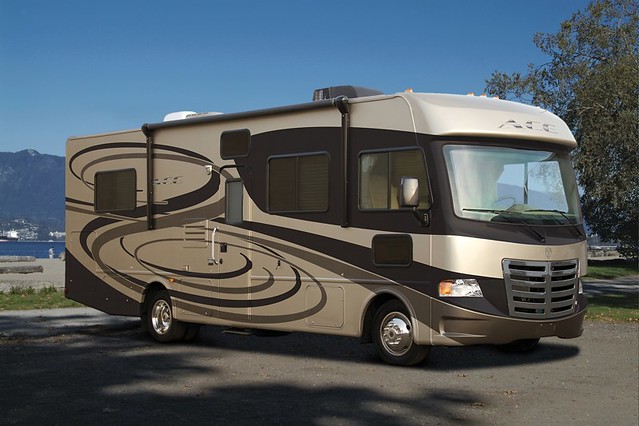7 RV Tips & Tricks
When you buy a new RV, the vital thing that you must know is that buying and RV is not same as the purchasing a car, RV’s definitely comes with a bundle of issues. When you purchase new RV, it comes with limited warranty period, so, if there is any problem, it is important to find the problem before your warranty period so that you can avoid to pay for the repairs from your own pocket. You can save lot of money and time by avoiding more trips to the repair shop. Here you can find a few suggestions and tips for RV owners.

Photo Credit: Doron Levy on flickr
1. Inspect All Doors of new RV
It is good thing to start with the basic steps. Check all the doors, exterior-bay doors and interior locks, and the cabinet doors are opening and closing properly and check they are aligned properly or not. Open and close all interior, exterior doors not just once but multiple times all the way through your trip, particularly after leaving your RV at a campsite. Sometimes it is almost necessary for you to replace and adjust some latches after you comeback from your first trip in your new RV.
2. Check out the Slide out
Check your RV’s slide, pull and push the slide the entire day to find if there are any squeaks, pops, cracks and other odd sounds. And also, look for alignment issues like as one side is moving slower or faster than the other. Many times new RV’s will have slide issues from the day they’re delivered from the factory.
3. Check Awnings
Check your RV’s sunshades or awnings a few times. If you have European style sunshades, then leave the awnings out during light rain, to check if water rolls-off the fabric. If your awning is of a standard style, make sure that you place one side slightly lower to make a hurl for rainwater fall off. Check if the awning has an auto retract during the windy weather, when the company sells the RV, they are very particular about this feature. The vital suggestion, don’t leave the awning open if you are not there to supervise.
4. Power UP
Power up your Recreational Vehicle for several hours with generator, and then use it. Turn on TV, Air Conditioner, verify your appliances are all working perfectly with this power supply. Once you are confirm with generator, then check the inverter. Remove the power supply, unplug the RV from power sources. Now turn on the inverter and decide which appliances and outlets require power. Use the power according to your invertor’s capacity. The best suggestion, don’t overuse the invertors power for unnecessary things.
5. Check the Electronics Systems
Check your new RV’s electronics systems, how they are working, how much power supply is required and etc. Check headlights, compartment lights, taillights, running lights, etc. Check all electronic and electric items like the cooler, heat pump, etc are working properly. It helps you notice if there is any major issue, so that you can approach the manufacturer immediately.
6. Check Water Systems and Propane
Check how the propane of your RV is working; test all the apparatus that run on propane including fridge, water heater, stove, etc. To check the display level works, fill the water tank till the level. And check all the dump-systems are functioning properly and the readouts are precise, so that it will help you know exactly when boondocking is required. You will understand in how many days you actually refuel the tank and dump the tanks.
7. Observe Water Heater
Supply power through propane to the water heater one day and heat the water with electric one day. Check to see that the water is hot enough, and how long it stays hot when you are taking a shower. Drain and refill the water in the heater and check how much it is taking to heat the water.
These basic steps help you travel safely in your new RV and knowing your RV completely can help you manage it in any kind of weather. Enjoy your long journeys in your new RV!


Leave a Reply
Want to join the discussion?Feel free to contribute!